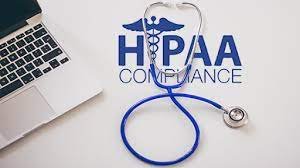Medical Coding
Medical coding is a little bit like translation. Coders take medical reports from doctors, which may include a patient's condition, the doctor's diagnosis, a prescription, and whatever procedures the doctor or healthcare provider performed on the patient, and turn that into a set of codes, which make up a crucial part of the medical claim.

WHY WE CODE
Let's start with a simple question about medical coding: Why do we code medical reports? Wouldn't it be enough to list the symptoms, diagnoses, and procedures, send them to an insurance company, and wait to hear which services will be reimbursed?
To answer that, we have to look at the massive amount of data that every patient visit entails. If you go into the doctor with a sore throat, and present the doctor with symptoms like a fever, sore throat, and enlarged lymph nodes, these will be recorded, along with the procedures the doctor performs and the medicine the doctor prescribes.
In a straightforward case like this, the doctor will only officially report his diagnosis, but that still means the portion of that report that will be coded contains a diagnosis, a procedure, and a prescription.

ICD
The first of these is the International Classification of Diseases, or ICD codes.
These are diagnostic codes that create a uniform vocabulary for describing the causes of injury, illness and death. This code set was established by the World Health Organization (WHO) in the late 1940s. It's been updated several times in the 60-plus years since it's inception. The number following "ICD" represents which revision of the code is in use.

CPT
Current Procedure Terminology, or CPT, codes, are used to document the majority of the medical procedures performed in a physician's office. This code set is published and maintained by the American Medical Association (AMA). These codes are copyrighted by the AMA and are updated annually.
CPT codes are five-digit numeric codes that are divided into three categories. The first category is used most often, and it is divided into six ranges. These ranges correspond to six major medical fields: Evaluation and Management, Anesthesia, Surgery, Radiology, Pathology and Laboratory, and Medicine.
The second category of CPT codes corresponds to performance measurement and, in some cases, laboratory or radiology test results. These five-digit, alphanumeric codes are typically added to the end of a Category I CPT code with a hyphen.

HIPAA
Healthcare Common Procedure Coding System (HCPCS), commonly pronounced as "hick picks" are a set of codes based on CPT codes. Developed by the CMS (the same organization that developed CPT), and maintained by the AMA, HCPCS codes primarily correspond to services, procedures, and equipment not covered by CPT codes. This includes durable medical equipment, prosthetics, ambulance rides, and certain drugs and medicines.
HCPCS is also the official code set for outpatient hospital care, chemotherapy drugs, Medicaid, and Medicare, among other services. Since HCPCS codes are involved in Medicaid and Medicare, it's one of the most important code a medical coder can use.
The HCPCS code set is divided into two levels. The first of these levels is identical to the CPT codes that we covered earlier.